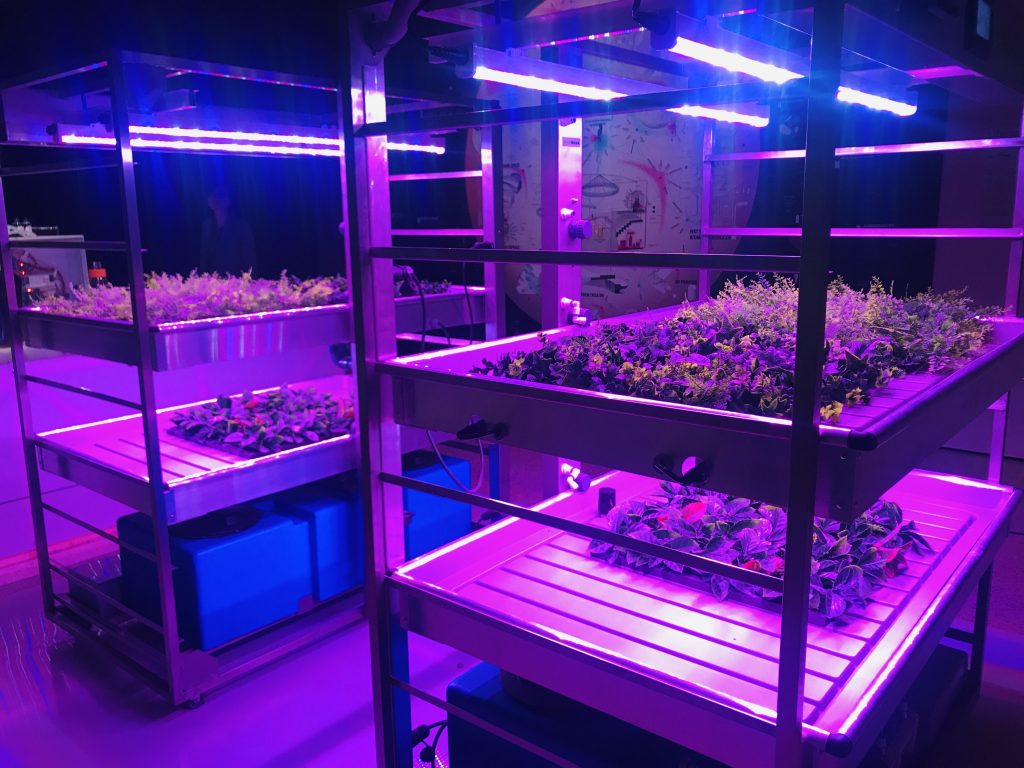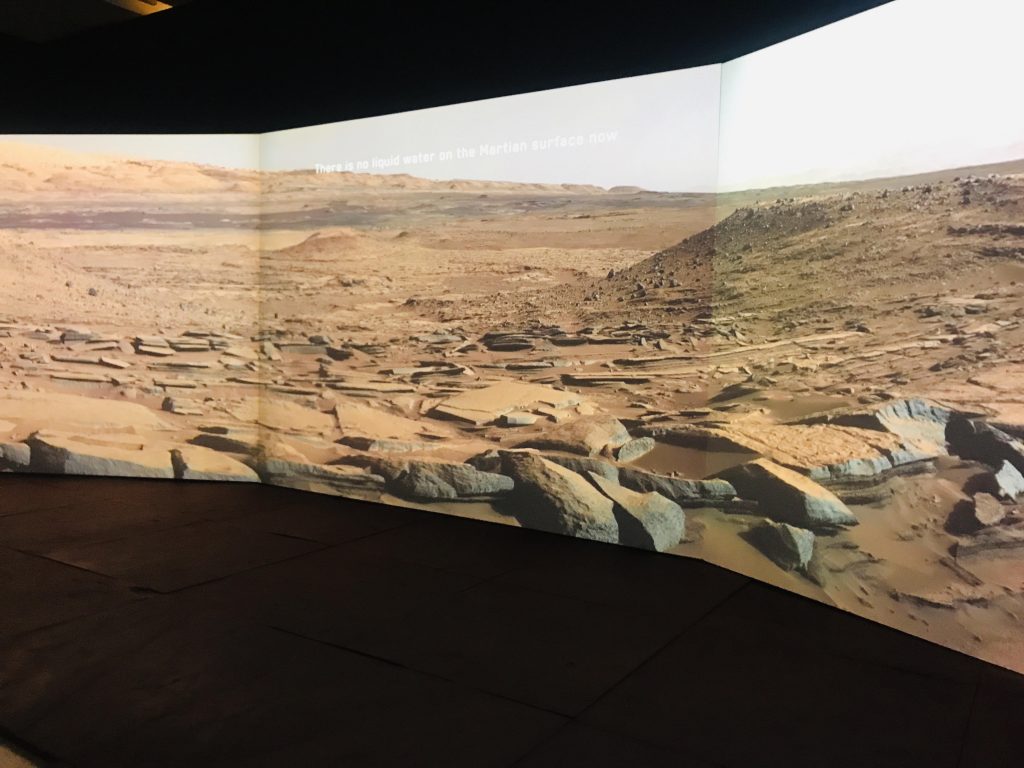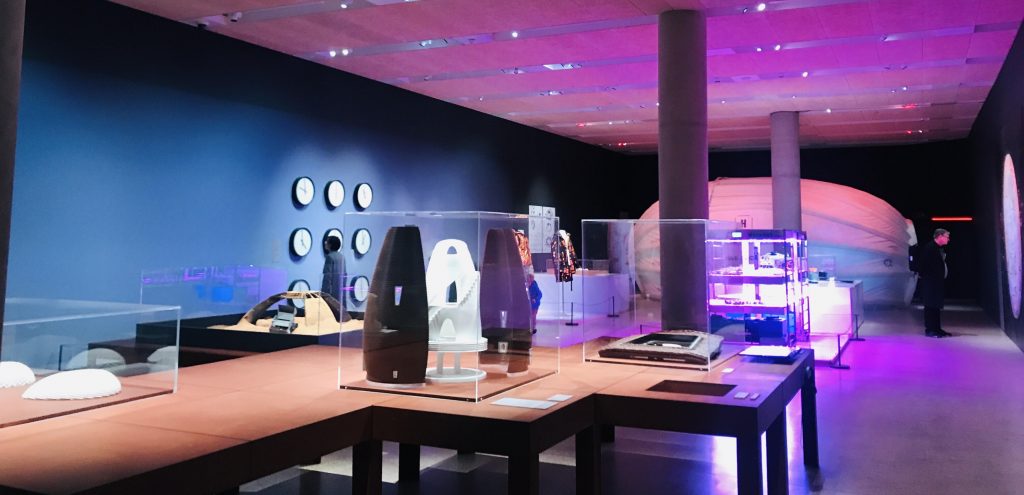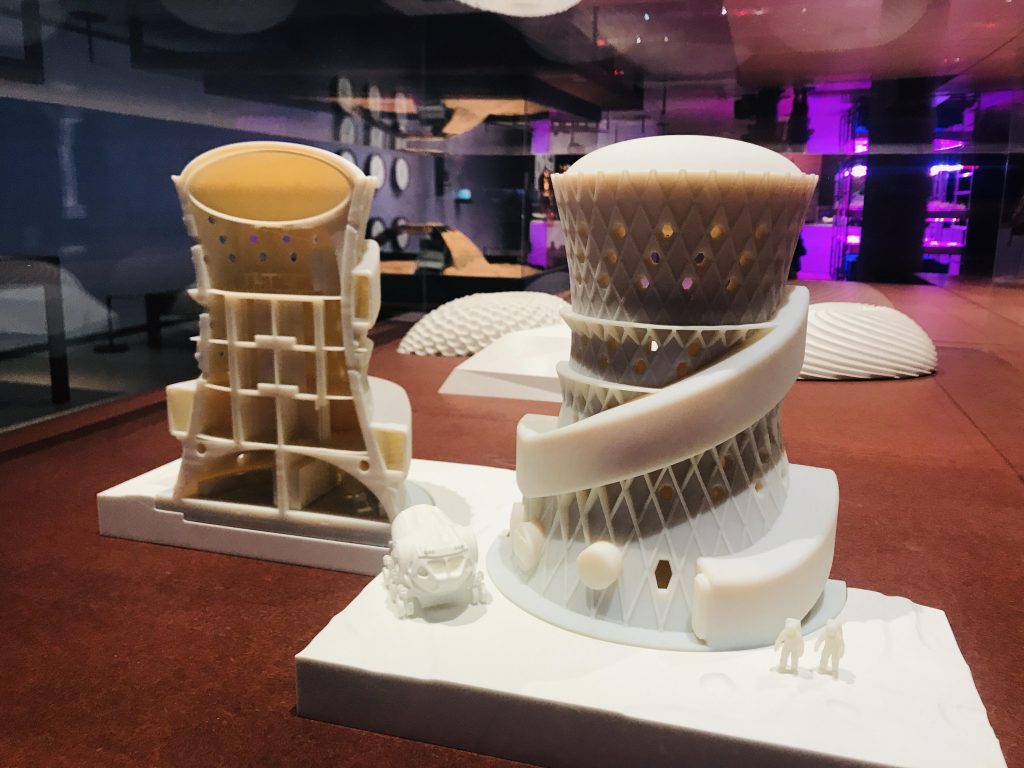The colonisation of Mars is on the horizon. Although we might not meet the ambitious timelines put forward by a private company such as SpaceX (a million people on Mars by 2050), and the headline-grabbing PR effort that was Mars One went quietly bankrupt last year, there are still a number of more measured government-backed missions that are likely to see fruition by the end of the 2020s.
The Design Museum in London, UK, is using this context to give a glimpse into the inspirational realm of interplanetary colonisation with their new exhibition Moving to Mars; and it is clear that our collective hopes are approaching reality. It’s a great setting for such an exhibition as the museum itself has sweeping, evocative architecture that speaks of future construction and social organising. The large, open spaces allow for fantastic room designs that help give a sense of the scale of the Mars mission and what it means for humanity.

The content of the exhibition covers a lot of ground, starting from the very first mentions (and drawings) in ancient texts through to astronomical studies and popular culture references that have enflamed our desire to visit (and fear of) the red planet.
We have full-scale prototypes of Mars rovers; 1950s models of spacecraft; space suits; conference tables; hydroponics; and, perhaps most importantly, a wide range of concepts for living spaces and long-term habitats. There is even a nod to terraforming – a possibility beyond our lifetimes but something many are dreaming of today.
This is an immaculately produced exhibition, with a wide range of visual delights that speak to creativity and vision as much as they do the hard science of interplanetary colonisation. The text panels are brief and to the point; perhaps a bit too brief. It would have been nice to see more detail in some areas, but short text panels and quick movement through topics are the modern museum way and the curators can’t really be faulted for continuing with such trends.

The simplicity in the text, however, is supported by some fantastic multimedia displays, interviews and even entire rooms that offer panoramic views of Mars in High-Definition; along with an inspiring animation piece that provides the visionary spirit that lies behind our desire to land on its harsh, dry shores. Together, they provide an engaging and inspiring look at the future of humanity among the stars.
There’s even a full-scale, inflatable habitat (complete with 3D-printed furniture) that you can enter to get a sense of what it would feel like as part of a network of rooms and buildings that would form early base stations. This interactive display really highlights the production values of the exhibition, with a video wall acting as the external view through the windows of the habitat and the sounds of sand storms rushing overhead.
There are some forays into the challenges of such a project, particularly those relating to harsh environments and the mental health strain of isolation. There could have been some more detail in these areas, particularly the anthropology and psychology of interplanetary colonisation, but there were some great artistic films that covered them. Writers such as Kim Stanley Robinson have done great work on the politics and individual identity issues that could arise from such a new frontier of human endeavour, and it would be fascinating to see more of that discussed in these kind of visionary explorations. Not a criticism of the exhibition, which did a great job recognising these challenges, but more a personal preference and interest to hear more.

The isolation of colonising Mars; the political implications and territorial rights; practices and community structures to help combat mental health issues. These are all going to be pivotal areas to have a detailed and considered approach to well before the practical efforts begin. Isolation experiments such as the Mars-500 mission (with participants from China, Russia and Europe undertaking a 520-day simulation) showed that, interestingly, the level of interpersonal conflicts and cultural difficulties were minimal. Rather, it highlighted issues around activity (or lack of it) and the development of sleep problems that began to impact a number of crew members quite severely.
Of course, a simulation experiment conducted on Earth is quite different to the real, deep-seated and inescapable isolation (and danger) that would be experienced in space and, eventually on the planet Mars itself. However, the significance of the genuine colonisation mission would provide a huge morale boost and give a sincere sense of vocation; as participants would be creating a new frontier of human history and endeavour.

The colonisation (and perhaps terraforming) of Mars changes everything for humanity. It represents the leap into a new, literally universal era that opens up our humbly evolved consciousness and begins to bridge out into the cosmos. What will we bring with us and what impact will we have, both in our own solar system and eventually far beyond it?
These are the ultimate questions in futurist thinking, because they take us so far away from our current state of being that it is difficult to envisage what the future might look like. It requires a more prophetic approach, rather than a purely rational one, as the spiritual and psychological foundations of our humanity will be altered once we cross the interstellar barrier.
The Moving to Mars exhibition at the Design Museum encapsulates a lot of these lofty ideas that get to the core of the human condition and its drive towards exploration of new frontiers. It’s a beautiful exhibition, near-perfectly produced, and is the kind of creative effort that should be celebrated for being on the cutting edge of human endeavour.
If you can, make sure to visit before it closes on 23 February 2020. You will leave inspired with creative visions and a renewed passion for the hopeful future that human progress could deliver for us all.

![[Review] Moving to Mars at the Design Museum](https://www.futureconscience.com/wp-content/uploads/2020/01/MovingtoMars1-scaled-764x267.jpg)

![[Review] Superhuman: Exploring Human Enhancement at the Wellcome Collection Superhuman - Exhibition Photo](https://www.futureconscience.com/wp-content/uploads/2012/09/Superhuman-Exhibition-Photo-150x150.jpg)
![[Review] Propaganda: Power and Persuasion Propaganda Due](https://www.futureconscience.com/wp-content/uploads/2013/09/propaganda2-150x150.jpg)
